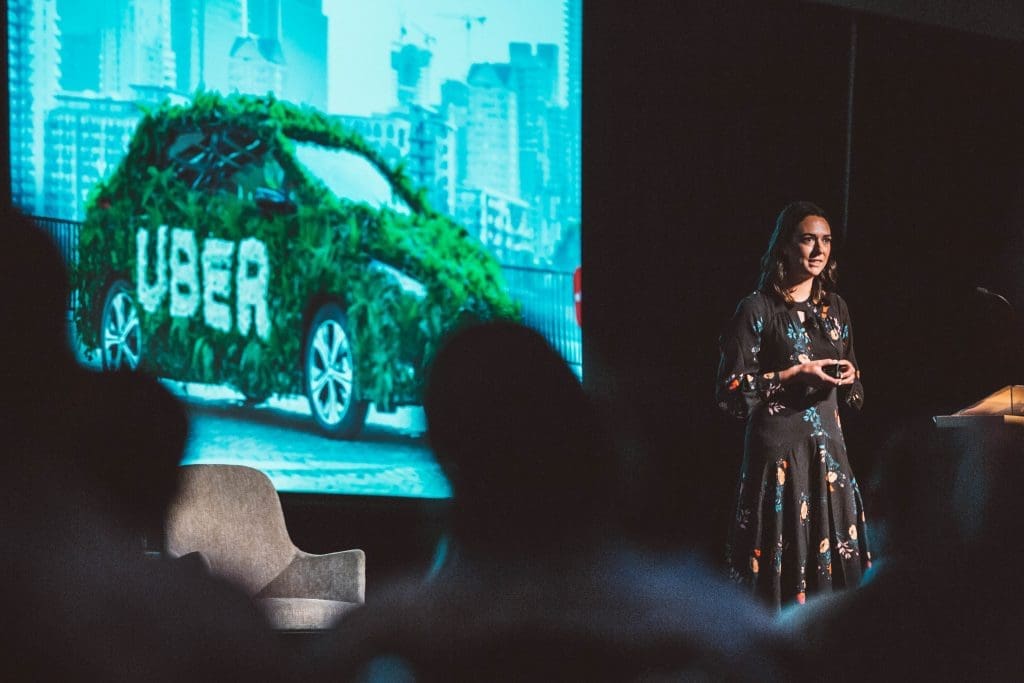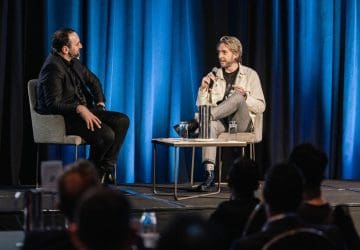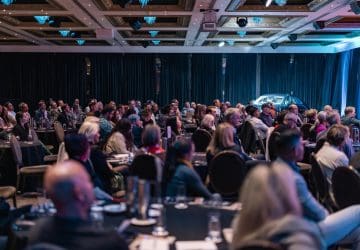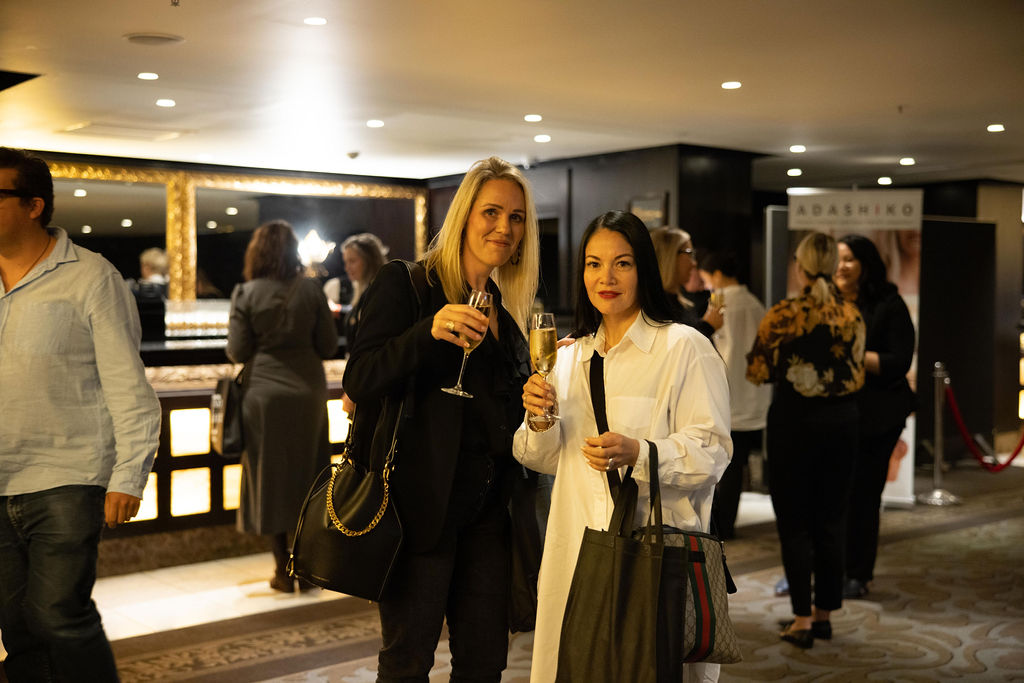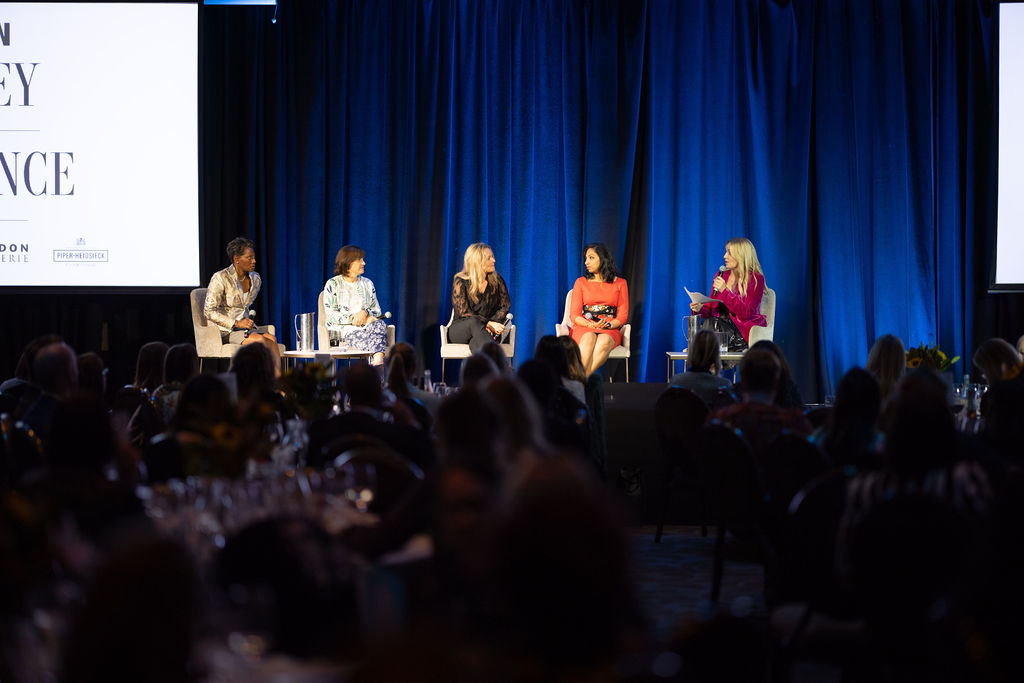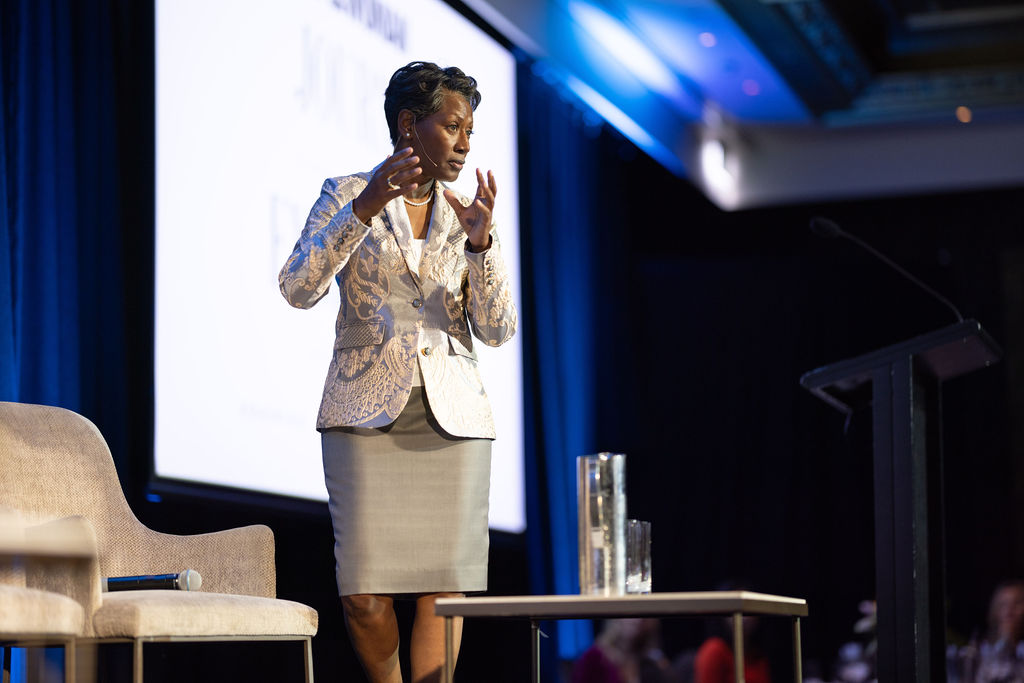Using Platforms To Create Sustainable Mobility
Cities around the world are really in a fundamental period of growth and change. Australian and New Zealand cities are needing to accommodate some of the highest rates of population growth in the OECD. They’re also dealing with an aging population, climate change, huge technological advances and evolving economies both on the national and global level.
One of the great questions that is being asked about our cities is: how do we accommodate for this growth that’s really important for our economies, but also maintain that livability that we all know and love? Cities like Auckland, Sydney, Perth, Melbourne, Adelaide, are consistently ranked in the top ten livable cities in the world. The way we’re moving right now, there’s a threat to that.
There’s also an important link between livability and the economy. People move to cities that they want to live in because it provides them opportunities with jobs, friends, families. That, obviously, has a flow on effect to the economy. But what do we mean when we say ‘livability’? There are lots of different things that contribute to the livability of a city. For us at Uber, obviously we are quite focused on the transport side of things. We believe that moving around in a city is a key component to livability.
Transport creates that connection between people and places. It allows you to see your friends and family. Get connected to services, to jobs and opportunities. But the challenge that we face today, is that the main mode of transport is the private car and it’s not sustainable for our cities and it is going to have a massive impact on livability moving forward.
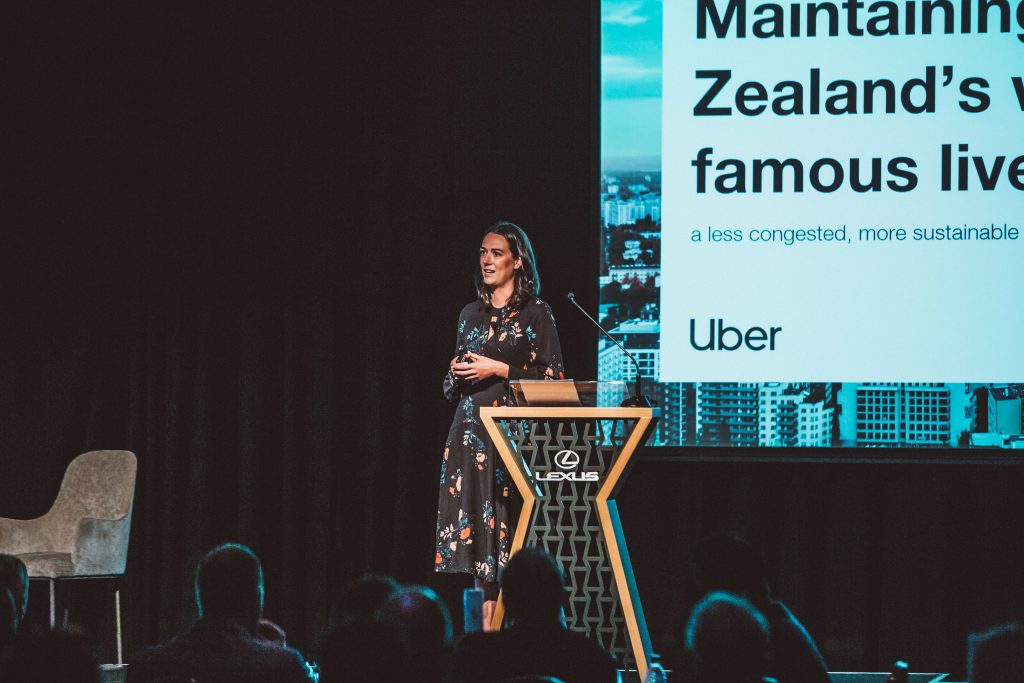
Not only is the car one of the most expensive things that we buy in our lives, it clogs up our roads, it contributes to carbon admissions, it has costly infrastructure that we have to deal with and it isn’t the most equitable form of transport for people in lower socio-economic areas.
Today, I want to talk about how we can do it differently. How we can think about a different model and what that will look like? How can we use technology to reduce that congestion and move towards a sustainable future that keeps that livability that we all know and love?
To break down the problem of congestion, there’s 1.2 billion cars in the world today, but they largely sit there unused. If they are being used, there’s oftentimes just one person in the car. They sit idle 95 percent of the time, and to make matters worse, they take up to 50 percent of the global oil supply. In Auckland, people love their private cars, everyone knows that. They are by far the dominant mode of transport. 90 percent of kilometres travelled by passengers are in private vehicles.
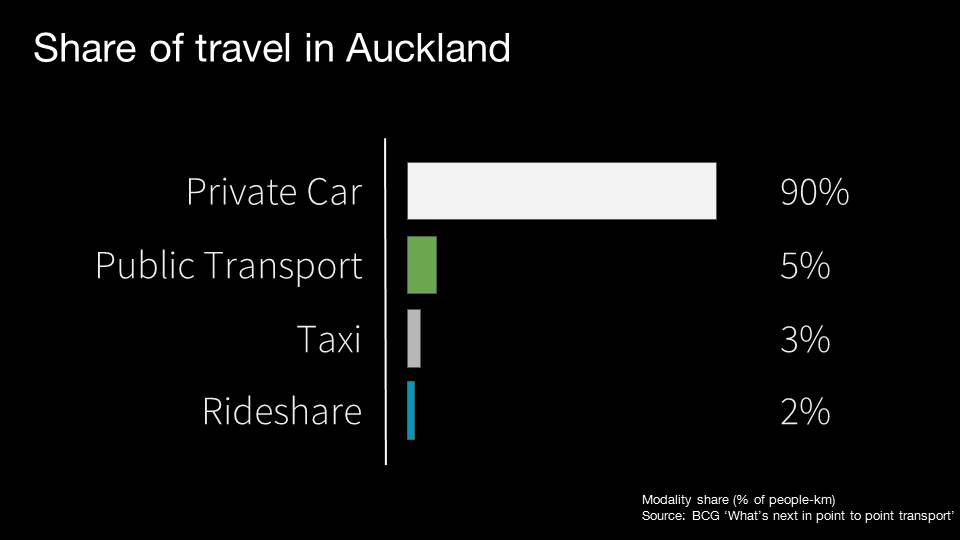
We actually conducted a study recently with BCG and found that Auckland is the most congested city in Australia and New Zealand. It takes 48 percent longer to travel in peak times of congestion in Auckland. That’s slightly more than Sydney at 47 percent.
New Zealand is growing. As we grow towards a population of 6 million people in the coming decades, this is just not going to be sustainable. There’s no way we’re going to be able to continue to travel the way that we are currently – single occupancy in these private cars. It’s going to completely overrun our city and make it not livable.
We’ve tried to deal with this congestion to date. This isn’t really a new problem. Other cities have tried to traditionally deal with it by increasing roading infrastructure and building new roads. What we’ve found is that that’s a self-defeating approach. The more roads you build, the more cars inherently fall onto them and fill them up.
At a high level, people are generally aligned with the way to combat congestion. Let’s encourage people to leave their cars at home, let’s get less cars in the centre city, let’s change the way we approach roading infrastructure and charges. Bringing those concepts to life is actually really difficult. It requires a lot of innovation to actually get there. I guess it goes without saying that this isn’t just a New Zealand problem. It’s without a doubt a global problem. There are a lot of cities around the world are facing these similar challenges.
Although my focus is New Zealand, I thought it would be interesting to share a few case studies of how other cities are dealing with these issues. In London, there are six million journeys made by Londoners every single day. Two million of those are less than two kilometres in length. London is dealing with such high emissions that 24 percent of their schools are above the legal limit in terms of nitrogen dioxide.
London is taking on this challenge and is really trying to address it to reduce these emissions that are in their city. In a world first, they’re charging high polluting vehicles a toll when they enter the centre city, which they’ve deemed the low emission zone. They are investing in greener buses. They are no longer issuing licenses to diesel taxis, and they are moving towards electrifying taxis as well. They are building more space to allow for walking and cycling, so they can encourage those alternative modes of transport.
This is all with the goal of reducing those emissions by 45 percent in the next two years. At Uber, we’re also playing a role in this. We’ve committed to electrifying our vehicle fleet in London by 2025. Because drivers own their own vehicles, we are assisting them with getting in those electric vehicles so they can be completely electric by 2025.
With New York, which is a major global city with 8.5 million in population and 60 million tourists visiting each year, that puts them as the third most congested city in the world. I used to live in New York, and the average speed across midtown Manhattan is seven kilometres per hour. To give you a little context, a brisk walk is five kilometres per hour.
One of the proposed concepts in New York is the concept of congestion charging. This system would charge all cars a fee for entering the congested city centre. The proceeds from those fees would go to helping build better public transportation. Investing and improving subways, buses, and also bringing transportation to areas that have historically been underserved.
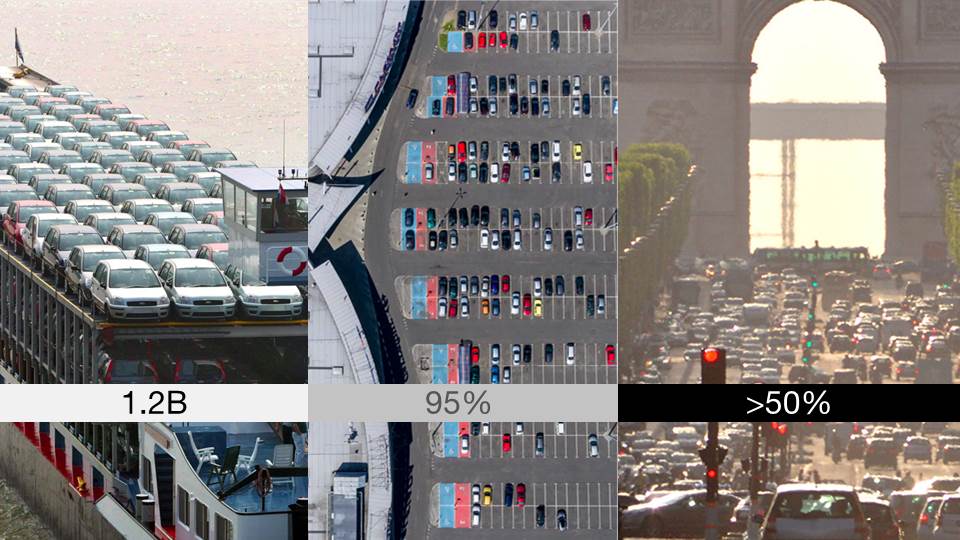
At Uber, we know that we play a role in this and we in some ways contribute to it. We have donated a million dollars to helping with the development and rollout of that congestion charging in New York. We know that people need to get from A to B and they use Uber to do that, and ultimately we need to figure out how to make that more sustainable moving forward.
To bring it back to New Zealand and this concept of congestion, what are the alternatives? How are we going to move out of this cycle that we find ourselves in now? How do we do it in innovative and new ways that are safe, affordable and convenient? We definitely don’t have all the answers yet, but we have some thoughts around how we might be able to do this in the future using new and connected transport modes.
Unlike the solutions I mentioned in New York or London, this actually isn’t about creating tonnes of new infrastructures or really overhauling the existing rules and regulations. It’s more about thinking about the infrastructure we have today and how can we better utilise it and how can we shift behaviour changes to new, exciting modes, but that don’t completely change the way our city is built.
We break that down into four key areas: shared, active, integrated and complementary, and electric and autonomous. The idea is shifting the paradigm from being in the private car that you’re just commuting by yourself to work, to using multiple modes of transportation to get to your end destination.
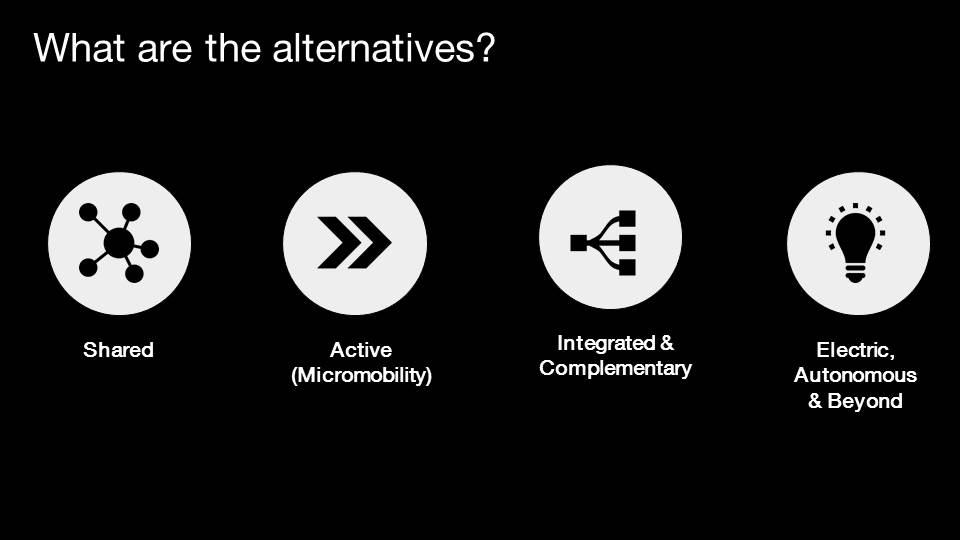
An International Transport Forum study estimated that if every vehicle on the road today was shared, we’d only need three percent of the vehicles that exist to move the same amount of volume. Can you imagine if there were only three percent of vehicles out on the road? It would completely change the way that our city moves and the landscape and it would open up all this free space.
Another thing that’s important to mention is we’re seeing that the appetite for change is really starting to emerge. People are really starting to feel the pain of congestion and they want to try new things. As part of that BCG study I mentioned, 45 percent of Auckland respondents said that they would use ride-share as a means to complement their existing main modes of transport, specifically for their first and last mile. Sharing a ride to a public transport hub, like a train station.
We want to go from your personally-owned car that you drive yourself, to getting yourself to this place using different modes. I’ll talk through some examples of how we are doing this already and where it’s moving. The first one being shared. Next time you stop at a traffic light, look to your right or your left, and I’m sure you’ll see just one person in the car next to you.
We’ve also seen this with Uber as we’ve grown in our cities. We’re seeing single riders taking the same trips at the same time of day in the same direction. What this has signaled to us is that there’s an opportunity for greater efficiency here. What we’ve done is created a product called Uber Pool. It’s available in the States, Melbourne and Sydney. It takes the concept of car pooling, which has been around for forever, and pairs it with really smart technology. What it does is it matches two people who are going in the same direction and has them share a car. They share the ride and they share the cost. It can be up to 50 percent cheaper than an UberX trip. It’s more efficient because you have multiple people in the car, more affordable. It’s actually better for drivers as well; they have more efficiency, they’re going trip to trip, essentially.
We’ve rolled this out in Melbourne and Sydney. In smaller cities, like Auckland, where there’s not as much demand, really our focus here is working with government to find those pockets of demand and where a solution like this makes sense. As you can imagine, there’s times of day where buses are completely over capacitated, there needs to be excess capacity in the network. Maybe another bus doesn’t make sense, but a few Uber Pool’s can definitely help fill the gap. The other side of the spectrum is late at night, or in lower density areas where it doesn’t make sense, it’s not cost effective to run a huge bus, but what if you ran a few Uber Pool’s, which will definitely be a more effective solution.
That’s the most tangible thing we’re working on now that I personally think will be great in a place like Auckland. I get asked about it a lot. We’re definitely focusing on how we can bring that to the market.
The second piece is active transport. If you think about a car, it’s 1,500kg of machinery that’s used to transport one person just a few kilometres. We’ve built these cars over the years to be everything we need. The reality is they’re not fit for purpose for many of the journeys that we’re doing.
If you take a step back and ask what’s actually the right mode for the short distances that I’m going, you might have a different answer. If you look at a place like Queensland, and this goes for Auckland as well, the trips are really short. 10 percent of trips are less than one kilometre, 20 percent are less than two kilometres and 30 percent are less than three kilometres.
These are really short distances where is just doesn’t make sense for one car. It makes a lot more sense to be jumping on an electric scooter or an electric bike. They are a fraction of the weight and size of a car, they are more affordable and they are shared.
This mode has really been embraced by Kiwi’s. Lime has seen great success. We have just launched our electric scooters, Jump, in Wellington and I think this is a key component of getting to that future transport landscape where we have lots of different modes that are much more fit for purpose.

The third part of the transport system encompasses this concept of integrated and complementary transport. We know efficient transport for a city is a robust mass-transit system, but the reality is that that doesn’t solve every problem. There’s still going to be a dependence for other modes or a private car to get you your first and last mile.
What we’re quickly learning is that it’s a combination of mobility solutions that actually offer the best alternatives to the private car. What we think is a platform that brings all of these modes together is probably the best way to get to a place where people actually feel incentivised to use a private car.
If you think about it, public transport is great at rush hour, but might not run late at night. An e-scooter is excellent for getting a short distance, but then you have to potentially deal with bad weather. Jumping in an Uber might be really convenient, but we are also subject to congestion during heavy traffic hours. Ultimately, if you can bring all those pieces together into a platform, you can let the consumer choose and let them optimise for the mode that they need at that time, given all those different factors.
This is about transforming the way we think about mobility from something that you own, your private car, to actually mobility as a service. A service that’s provided to you. We’re thinking about that at Uber; bringing all those modes into the Uber app.
An electric bike, an electric scooter, an Uber Pool, and even your bus or train. Connecting that in a single place where you can see what your journey looks like. You can optimise what type of route and trip you want to take. And you can pay for it all in a single place. That’s definitely the North Star, we’re not there yet. We have elements of it around the globe that we’ve done.
I think this is really going to become the catalyst for getting people to make that decision that they don’t need to hop in their private car because the options available to them are much more effective, efficient and affordable than jumping in that private car.
If we think about the future, it’s really exciting because we hope for it to be electric and autonomous. What I mean by that is really self-driving cars that are electric. If self-driving cars are successful, they have the potential to make our roads safer. The OECD expects that we could reduce the number of cars on the road by 90 percent, if self-driving technology is embraced.

I think it’s an important thing to mention that getting to the place where self-driving technology is there, there’s one important caveat. The idea is that self-driving technology in the future is shared. That is the focus for us at Uber now. How do we get people to start embracing that shared economy and getting comfortable with shared mobility? That’s going to be the major dependency for us to get to a self driving future that we can reap the rewards from and we’re having to sit single occupancy in our self-driving cars.
In other exciting news, we’re pushing ourselves to think beyond just ground transport, in terms of how we can reduce congestion and how we can maintain the livability. We know there’s lots of trouble with roading infrastructure, so we decided to take it to the skies.
That’s Uber Elevate. It’s our vertical and takeoff landing vehicle. It’s essentially a flying car. It takes off like a helicopter and flies like a plane. We are going to be testing it in the coming years in LA and Dallas and we’ve actually just announced that Melbourne will be the first international city that we’ll test this in.
The concept with this is that we want it to be right for cities from the beginning. We’re making them quiet, they’ll be zero emissions, fully electric and the idea is that they’ll be affordable so that everyone can have access to these. We can think about this as another mode that gets integrated into that transport mix and gets us away from the private car.
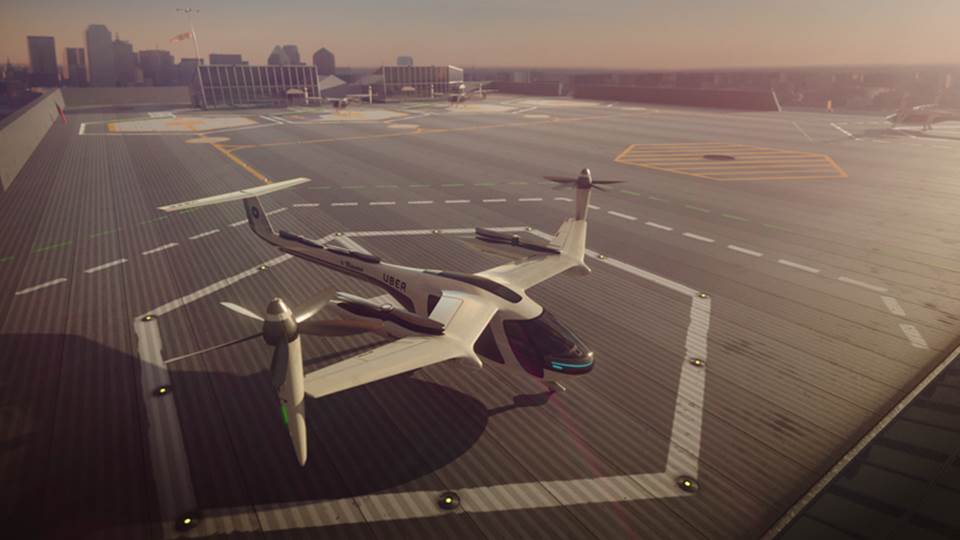
What would the world actually look like, when we actually get to this future? An example is in San Francisco, where they’ve gotten rid of some car parks and they’ve put a great, beautiful living space for people to hang out in. I think that that’s really part of it. We start to have streets that are for people, not for cars.
I know that I feel really passionate about this, Uber feels really passionate about this and my colleagues do. But I think one really important caveat to make here is that we are not going to be able to do this by ourselves. We can create technology that allows you to share a ride or a scooter, or even get access to transit, but the reality is that our cities and public agencies in those cities need to embrace this as well.
They need to be open to trialing new types of technology so we can understand customer behaviour and we can iterate over the years. They need to continue to find ways to reduce congestion in those centre cities and continue to fund mass transit. For us, we know that Uber isn’t going to be the silver bullet for this. We absolutely cannot do it alone.
In order to bring this to fruition, it takes the likes of our government, and our policy makers to embrace and start to think innovatively about what we can do to move away from the congested reality that we’re in today.
I think if we do it right, we can move from a place that’s choked by cars, to one that’s really built for people and that’s really exciting to think about.

Andre Rowell: If we talk about a global perspective, what’s your take on New Zealand business, innovation and embracing new technology?
I’m obviously not from New Zealand. I’m from the States originally, but I’ve been here for the past three years. I’ve been so overwhelmed by how everyone is so welcoming and I think that’s amazing. I also think that’s indicative to how Kiwis embrace everything. They embrace people, change and new ideas.
People often talk about how McDonalds test their new menus and concepts in New Zealand. We do that with Uber as well. We test a lot of policies and products because we know that it’s an amazing test market and people are willing to try new things. I think, when I talk about these global products that we’re working and focusing on, New Zealand is without a doubt at the top of the list for some of those. People recognise it as a market that has a lot of challenges in the transport space, but also has a lot of willingness and openness to try new things.
Danu [Abeysuriya from Rush Digital] brought up the New Zealand psyche a bit and referenced the Larry Ellison joke. Do you think there are things that hold us back with our reserved, humble nature?
I think a lot of communication in New Zealand is built on trust and familiarity. From my perspective, Kiwi’s aren’t going to tell you exactly what they think right out the gate, you need to build that trust. It’s a small enough community that I think you can do that. Once you do establish that trust, people are really open and willing to share.
Do you feel, in terms of Uber as a company, that there is a massive shift now? Pre-IPO, post-IPO? Does it feel different?
Yeah, it’s interesting. We’ve definitely been on a journey. Even outside of the IPO – there’s been a bit of a shift with the IPO. I think we’ve been on a journey since we started in San Francisco nine years ago, and even since we started in New Zealand five years ago. Moving from that scrappy startup to something that is much broader than we even really could have guessed at the beginning, we’re moving far beyond ride sharing.
That is our bread and butter today, but we see ourselves as a mobility platform that provides a lot of different modes and connects with all different parts of the city. I think there’s been that shift and then a bit of a cultural shift too where we’ve recognised that we can’t do this on our own.
We have to do it in partnership with our cities, our communities, our local councils, and that’s really what’s going to drive the best outcome. We’ve gotten grounds for support from the people that use it today, but that’s not going to be the way that we’re successful in the future.
I’m going to go back to early days and some of the bad press and evolution around that. Is that necessary when you are going out and you are doing something that is changing things?
I don’t know if I’d say it’s necessary. I’d like to think that there was this time where a lot of companies in Silicon Valley went through that and if we were to do that again, we’d do that in a different way.
I don’t necessarily think it has to be like that at all. I think there are inherent differences in the way we run as a small, decentralised startup, versus right now, where we’ve definitely moved into a more centralised global company. I don’t think you need to be a ‘brilliant jerk’ to do that successfully. I just think that’s been the way it’s happened historically. But I’d like to think that if we’re going to do it again, it’d differently.
Are there things that can be learnt from the startup world in terms of how they build a culture?
Definitely, I’ve heard that there are a lot of companies in New Zealand embracing agile methodology. We don’t necessarily follow that at Uber, but we do have some pieces of it that are similar. There are three things that we hold dear and true to our hearts and allow us to innovate and move quickly.
One is a ‘first principles’ approach. So never assume that the way things have been done historically is the way it should be done moving forward. Always questioning those assumptions and the ways of working. That allows us to quickly iterate and change where necessary.
The second one is we test everything. We A-B test everything. We run controlled treatment experiments on almost everything that you see in-market and that really allows us to have a set of data to see if the things we put out there actually work. A lot of our conversations are rooted in data first and then overlay a qualitative lens to see what are the other factors that the data can’t tell us. That’s been something we’ve done the whole time I’ve been at Uber. It’s ingrained in the way we work.
The third thing is just playing to our strengths. We’re good at logistics. We’re good at moving things and people around, so we’ve taken that from the rideshare industry and we’re applying it to electric scooters and bikes. We’re applying it to freight, to food, to other modes of transport. We’re doubling down on what we’re good at, which is operations and logistics.
There’s a report that Uber put out on July 15th about diversity and inclusion. The aim is to be the most diverse and inclusive company in the world. How and why is it important?
We just had our Chief Diversity Officer in town a couple of weeks ago, and I got to spend some time with her. Why? I think if you were watching the news in 2017, you’ll know that we got racked through the coals and it really brought to light some of the demons that we had in the closet in terms of the lack of diversity in our organisation and the impact that was having on people.
I think we’ve done a complete 180 in terms of the way that we think about diversity. We’ve brought data to the table and looked at how diverse teams and organisations actually function much better than none-diverse ones.
That’s one of the things that really was the catalyst for why we started down that path. What we saw is that a lot of people within Uber were like ‘Yes! Awesome!’ There were a small, loud group of people that were dominating the rest of the organisation that were not very diverse. There were a lot of diverse folks in the organisation that just didn’t have the voice to speak up.
We operate in 600 cities that started at a decentralised operating model. We have teams from every walk of life. We’ve always been diverse, I just don’t think we fostered it. The Chief Diversity Officer and her team have done a wonderful job of just getting an understanding of who exists in our organisation.
Where did they come from? What are their aspirations? What do they want from a company? Then that’s flowed into a lot of our HR policies, our recruiting policies, even just the groups, ERG’s and the resources we have available that are much more inclusive and much more embracing of the different types of people we have in the organisation.
Is it just the nature of the tech industry that this is going to be a hurdle? Is it a wider thing? Is it about having a STEM focus younger?
Yeah, I think it’s across everyone. I think that the tech industry does feel it a little bit more so, and especially companies that started in Silicon Valley. But again, I think this is another example of if we were going to do it again, I’d hope that we’re going to do it a little bit differently.
I don’t think it inherently has to start this way and then you get this big ‘Aha’ moment, where you realise diversity is important. I’d like to think we’d do it a little differently if we did it again.
I have a four year old daughter. Do you have any advice I could prepare her for a future world of dynamic workplaces?
I think that there is a tonne of value in STEM-based subjects. I think the amount of data that is going to be available to us moving forward is only going to grow. So if you can have a skill set that allows you to consume that data, understand and draw insights, that’s fantastic. The people that know how to do that at Uber are really successful.
It allows you to rangle so much knowledge and allows you to use that to make really good, solid business decisions. That’s one piece.
I think the second piece is to arm her for change and create an environment that embraces change and isn’t scared of it. I think the pace of change is only going to increase. You have to have a mentality to roll with the punches and get excited about it, rather than be fearful of what that change is.
Are there things that are moving anyway in terms of wanting more flexibility from our workplace and working from home? Are there things that are going to change congestion?
Yeah, I think flexible work and different styles of work in the gig economy – we’re at the centre of that and we intimately understand that – are changing the way people move around their cities. I’d like to think we serve up these modes that makes sense for people and they are much more willing to embrace them because the type of movements that they are doing around the city, it’s not like they’re just doing 9-5 in the city. Potentially it’s a little more dynamic. But I think that actually creates a little bit more of a problem, if anything. Right now, the routes are so clear and very in and out. That starts to become a big web of people moving in different directions. It could be even more complicated.
The more choice you bring to people, the easier you make it for them. They will inherently shift and it may take some time. Scooters are a great example. Who thought that people of all ages would be flying around on electric scooters. I think it’s surprising when you put something in market and you make it convenient and affordable and people are already very embracing of new technology. That shift can happen quicker than we think.
Can you give us some insight into the future of technology and vehicles?
We’re definitely dabbling in all parts of it. We have Jump, which is electric scooters and bikes. We have an autonomous vehicle division that’s based out of Pittsburgh. We have Elevate, which is based in the US working with NASA and really we’re doubling down on that. It’s quite an innovative way to think about moving people.
You just don’t even know what’s next. The next thing could pop up in the next six months and we could say, “Oh, actually, that’s a great mobility solution. Let’s bring that into the fold.” We’ve got the ones that we’ve set our eyes on, but who knows what could crop up next. I think we’re pretty willing to try anything out.
How do you describe yourself as a leader?
I really try to foster trust and empathy. We have people that work at Uber from all different walks of life, all different ages. So I think establishing that mutual level of understanding and trust from the beginning is the foundation to anyone doing good work. If you don’t trust your teammates and have positive intent from the get-go, you’re not going to get anything done.
It’s very easy to get bruised egos and be bureaucratic about things. So that’s generally how I try to lead, I try to exhibit that myself because I think people are receptive to that if you are vulnerable and you exhibit those qualities.
Try to create an environment where people can bring their whole selves to work. We do work hard at Uber, so it’s important that you trust and like spending time with the people around you.
As a leader, how do you deal with some of that workplace burnout?
At Uber, we’ve gotten way better at it. I feel a very personal responsibility to make sure that my teams don’t experience that. I like to think about creating teams that have a balance between autonomy and structure. People love autonomy. They love to feel that they can tangibly make decisions, and feel like they own that piece of work.
But I’ve also found that people really love structure too. Ambiguity is scary and can make people feel like they are swimming in an ocean with no one around them. I think finding that balance and putting some operating cadences in place, like centralised stand ups, or weekly meetings, whatever it might be, that enables that structure where people feel like they have the support and they have the freedom to go do what they want.
What’s the best piece of advice you’ve been given?
I don’t know exactly how she phrased it, but our old Head of Comms at Uber was talking about her career and she said, “It’s a roller coaster. It’s its ups and downs. It is just a constant roller coaster in your life and work and you just have to get excited about it and the kind of swings that it might give you.
I don’t even know if that’s a piece of advice. It’s just something that’s stuck with me when I don’t know what’s next, or I don’t know what decisions to make next, or feeling a little lost and in that ambiguous area. It’s an ever-flowing roller coaster and you’ve just got to enjoy it and not get too overwhelmed by the ups and downs.
What advice or strategies would you give, from an American perspective, to those that are wanting to partner with big blue chip companies, like Uber, to help scale their business?
Reach out to people. I get enquiries all the time. I think that we, despite being a big company, there’s still lots of the market and people that we haven’t tapped into. So if you can provide a compelling case for a demographic that we haven’t been able to get into yet, or something like that, that’s really interesting for us. Like I said before, we know that for some of these future ventures, we need to do it in partnership with local organisations, so we’re more than willing to do that.
There’s a lot that I’d like to do in the space and really get in with some of the communities in New Zealand. For example, with some of the new housing developments that are being built, should we be thinking in the same way about transport that we always have for those new developments? Should Uber and Housing New Zealand work together to think of innovative ways to get people in and out of those communities? We’re pretty interested in almost anything.
Do you think Uber are thinking about block chain? Are they thinking about open data economy?
Yeah, definitely. I think that we are very aware of the global nature of our business and how we are deeply ingrained in the communities that we operate in and around the world. We’d be remiss not to be thinking about that.

